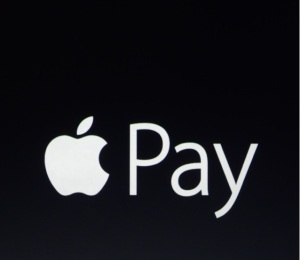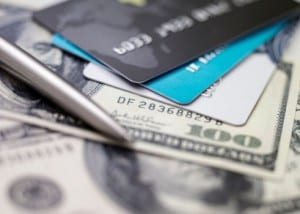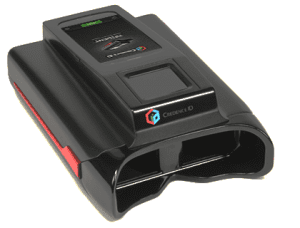March is Mobile Month here at FindBiometrics and we’ve already seen a great number of news items surface that are shaping the future of strong mobile identity. With this year’s Mobile World Congress (MWC) featuring more biometric solutions than ever before, new innovations from Apple and an encouraging amount of talk out of SXSW in Austin, it’s clear that digital identity and mobility are nearing a critical mass of demand.
The variety and versatility of mobile technology means that biometrics can offer a lot more options than simply screen unlock features on smartphones. Today we’re going to look at five different mobile biometric applications.
Payment
 We’ll start with the obvious application: mobile payment. Payment technology, mobility and biometrics have combined to bring about the next generation of how consumers pay for things both online and in real, physical life. The most famous deployment in this area is Apple Pay, the mobile wallet available to iPhone 6 and iPhone 6 Plus users which authenticates via the Touch ID fingerprint sensor.
We’ll start with the obvious application: mobile payment. Payment technology, mobility and biometrics have combined to bring about the next generation of how consumers pay for things both online and in real, physical life. The most famous deployment in this area is Apple Pay, the mobile wallet available to iPhone 6 and iPhone 6 Plus users which authenticates via the Touch ID fingerprint sensor.
Of course, Apple is not the only OEM offering biometric payments. Samsung announced its own mobile wallet at this year’s MWC, Samsung Pay, which also leverages a smartphone’s fingerprint sensor.
Beyond the phone, some card issuing banks and payment networks have recently endorsed wearable tech and vital biometric authentication for this same application. The Nymi biometric wristband, which measures a user’s EKG reading for authentication is currently being trialed as a super-convenient mobile wallet, and MasterCard is in the process of launching a fingerprint scanning credit card..
Banking
 Finance and mobile biometrics doesn’t end with payment. Banking, a transaction that carries a higher risk profile than payment, is a separate area of application for mobile strong authentication.
Finance and mobile biometrics doesn’t end with payment. Banking, a transaction that carries a higher risk profile than payment, is a separate area of application for mobile strong authentication.
Mobile banking and biometrics are still in a nascent phase. The demand is there, but many banks are still waiting for a solution that fits their customers. That said, EyeVerify – a company that provides mobile vascular biometrics – has been chosen by The System Works in Australia for mobile banking authentication, and some banks are coming around to the use of Apple’s Touch ID for mobile app authentication.
Wherever there is a potential application of biometrics there is also a balance that must be struck between convenience and security. With payment, convenience is more important, but the opposite is true in banking. Our sister site, Mobile ID World, published a two part interview with Jay Meier of BIO-key International on the deep subject of mobile biometrics and banking in comparison to payment deployments.
Physical Access Control
 Moving away from consumer applications and to the world of enterprise, mobile biometric tech is entering the world of physical access control in an encouraging and potentially disruptive way. The technology of opening locked doors has progressed quite a bit thanks to the increased accessibility of biometrics, and now mobile devices are continuing that trend.
Moving away from consumer applications and to the world of enterprise, mobile biometric tech is entering the world of physical access control in an encouraging and potentially disruptive way. The technology of opening locked doors has progressed quite a bit thanks to the increased accessibility of biometrics, and now mobile devices are continuing that trend.
The Zwipe biometric access card, for instance, combines two security paradigms into a very attractive security solution for companies that use contactless card security systems. Zwipe’s card features an embedded fingerprint sensor which authenticates users on-device before activating a positive signal that opens a card-based lock. The convenience in this case goes beyond the end user experience since companies looking to upgrade to biometrics need only purchase the Zwipe cards and not install new security infrastructure.
In a similar vein, biometrics and smartphones also have a place in physical access control with Bring Your Own Credential technology. Supported by some access control solutions providers like EnterTech Systems, this mobile spin on physical access allows for smartphones with biometric and wireless technology to be transformed into security credentials that can open locked doors.
Law Enforcement
 More than just an authentication technology, biometrics can be used for identification too. In law enforcement , this often equates to using facial and fingerprint recognition technology to compare someone to a database of criminals and wanted persons. Thanks to innovations in mobility this matching process no longer needs to be done at a police station, but can be performed in the field with specially designed handheld devices like the Verifier Sentry from Crossmatch.
More than just an authentication technology, biometrics can be used for identification too. In law enforcement , this often equates to using facial and fingerprint recognition technology to compare someone to a database of criminals and wanted persons. Thanks to innovations in mobility this matching process no longer needs to be done at a police station, but can be performed in the field with specially designed handheld devices like the Verifier Sentry from Crossmatch.
Just like with physical access control, the law enforcement vertical also has room for a semi-BYOD element of efficiency too. The New York Police Department, as an example, has employed the use of agency issued smartphones and fingerprint scanners to allow for a similar kind of in the field operations.
The amount of agency time saved by allowing for in the field identification not only makes sure innocent people aren’t being dragged into a police station for no reason, but also cuts down on overtime. With mobile biometrics in law enforcement, agencies save on payroll and officers can better use their time while keeping society safe.
Disaster Response

National biometric databases can be combined with mobile tech in order to aid in disaster recovery situations. When a community is devastated by fatal disaster – climatological or human caused – victim identification allows for closure of families affected by the cataclysm and for a proper assessment of the damage caused.
In Indonesia, Credence ID’s mobile biometric technology has been deployed to identify victims of the tragic crash of AsiaAir Flight QZ8501. Because Indonesia has a comprehensive national database containing biometric and biographic data of nearly every one of its 250 million citizens, and Credence ID’s Trident reader features high accuracy face, fingerprint and iris recognition sensors, bodies of the fallen were identified at a very fast rate.
*
Stay posted to FindBiometrics next week as we bring Mobile Month to a close. Join in the conversation on Twitter by following us and tweeting with the hashtag #FBMobileMonth.
—
March 18, 2015 – by Peter B. Counter


Follow Us